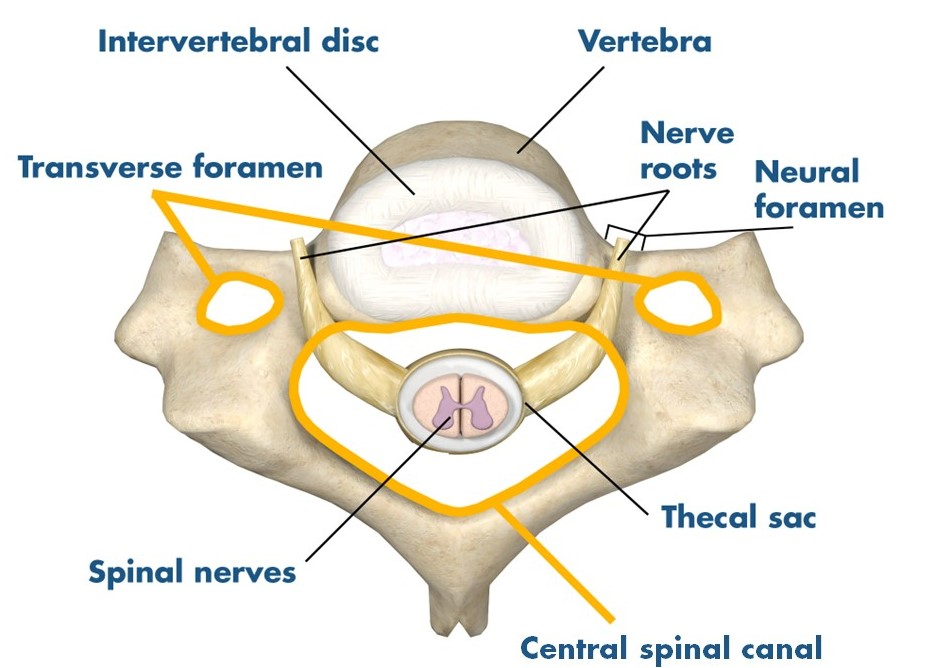To get a better idea of why your neck hurts, take a look at how it works. The spine is made up of 33 bones, called vertebrae or vertebral bodies. The vertebrae are positioned one on top of another from the base of the skull to the pelvis.
A shock absorbing structure called an intervertebral disc sits between each vertebrae, and each spinal segment (defined as two vertebrae separated by one intervertebral disc) is connected by two small articulating surfaces called facet joints.
Together, the vertebrae and intervertebral discs form the spinal column. The spinal column supports the weight of the head and upper body, serves as an attachment point for muscles and ligaments that allow you to perform every day activities, and most importantly, protects the spinal cord.
The top seven vertebrae make up the neck (or cervical) region of the spine. When the bones or discs in the neck become diseased or injured, it can affect your ability to move and function normally.

